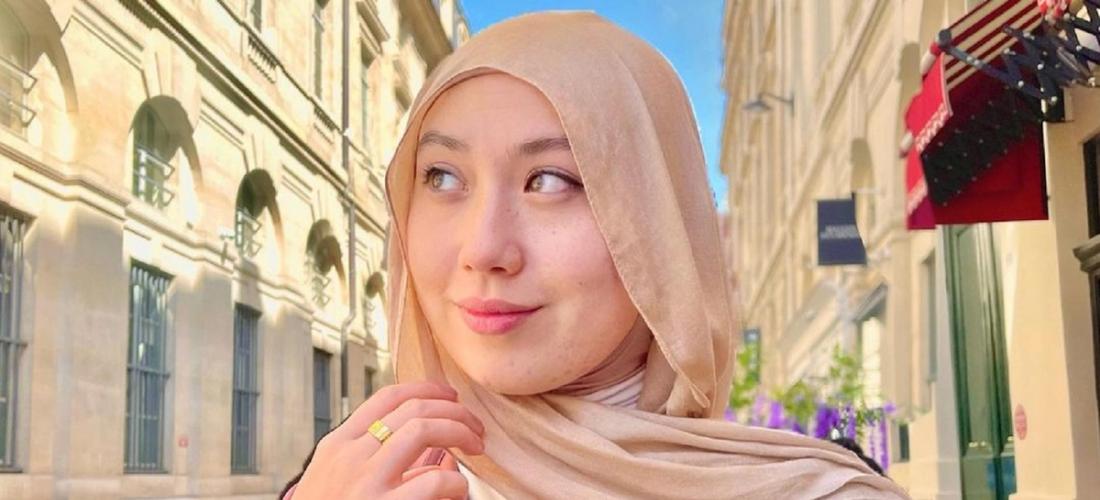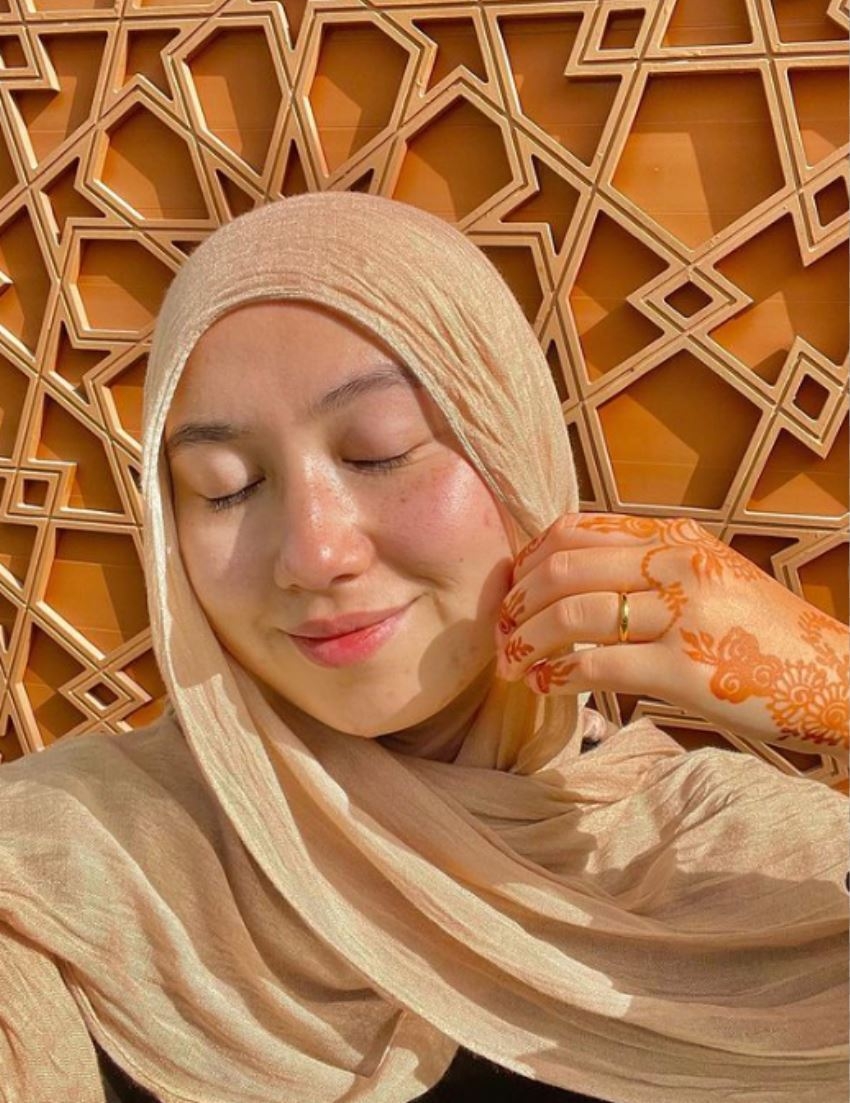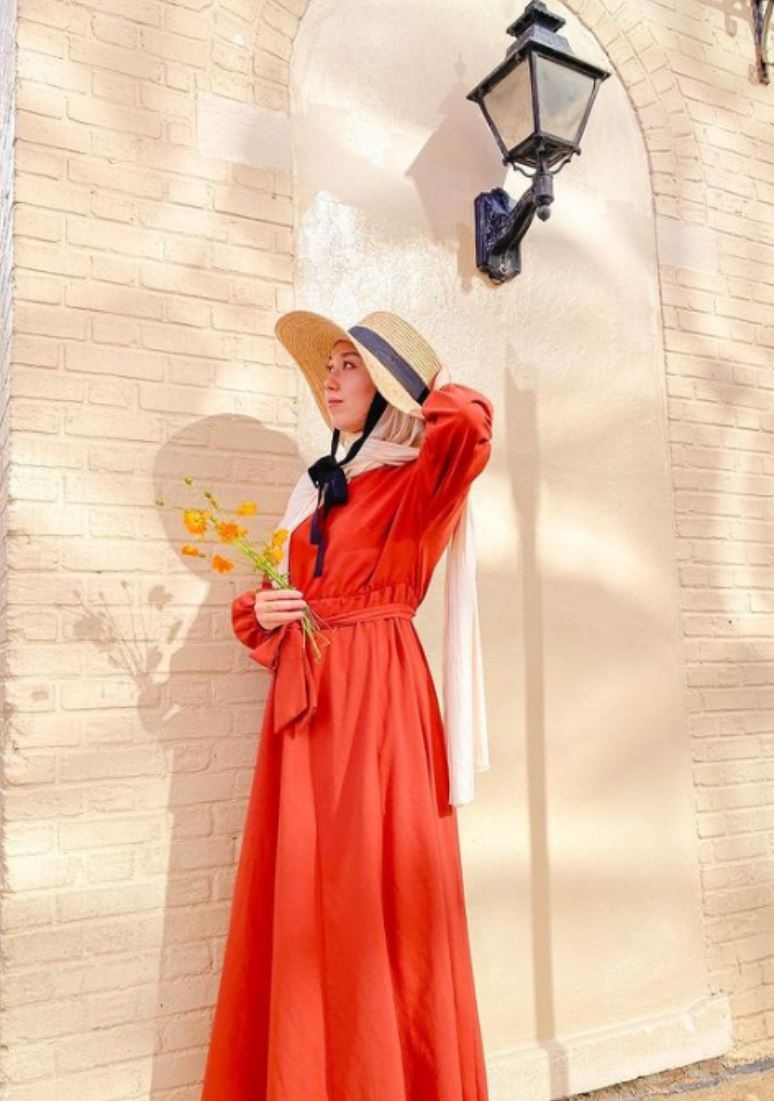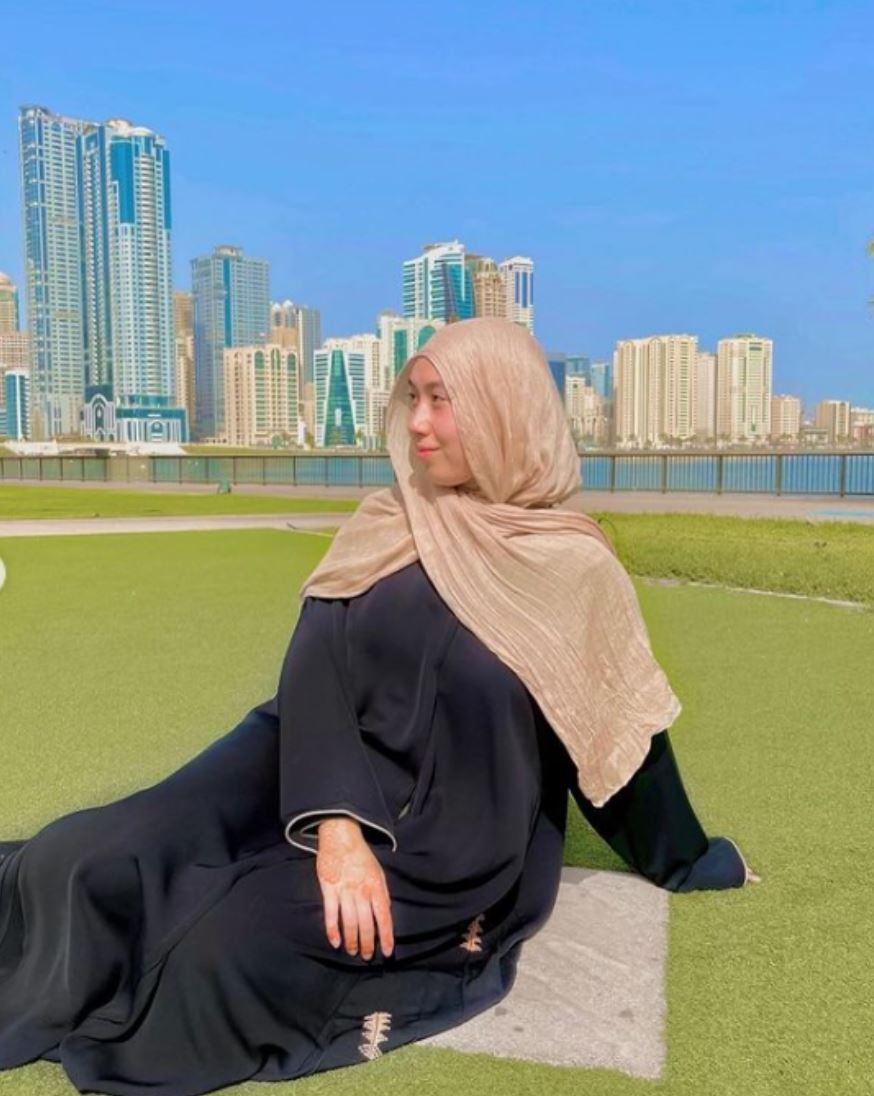My Journey to Islam and Hijab – A Conversation with Content Creator Mara
Lifestyle
|
Sep 26, 2022
|
7 MIN READ

Mara., @mi.lk
Islam is the fast-growing religion in the world, and has been for a while now. As a Muslim, I can certainly understand why so many are attracted to this beautiful religion. But we have to admit – while it may be the fastest-growing, Islam also continues to be the most misunderstood religion. Maybe that’s why Muslims love a good convert story. It’s that heart-warming transition from the perception of our faith, which may be tainted with misinformation, to reality – that Islam is a beautiful faith full of clarity and unity.
In my latest article here on The Haute Take, I discussed the hyperfixation we have on hijab and how excessive criticism of hijab is damaging to the women who wear it or want to wear it. I centered this experience with regards to convert sisters and the unnecessary pressure they sometimes receive in regards to wearing hijab, how we need to change our conversation around it.
To bring the conversation full-circle, I reached out to Mara (@mi.lk), a content creator who converted to Islam in March 2021, about her experiences with coming to Islam and wearing hijab. Her story is one that many may be able to relate to, but what’s interesting is that the pressure she felt to wear hijab didn’t come from the community – it came from herself.
In our conversation, we discussed how releasing that pressure helped her come to terms with hijab and embrace the process as an internal, spiritual journey, one that is a marathon, not a sprint or a race.
What was it about Islam that attracted you to the religion?
I always believed there was something out there, a higher power, but never connected with any belief system I knew. What I loved about Islam is that it [is] logical and the Quran [has] never changed. I started connecting with the religion by saying Bismillah and Alhamdullilah. I felt comfort and reassurance each time I said these words.

Content creator and influencer Mara (@mi.lk)
What was your first perception of hijab? And how did your perception change about hijab after converting?
I saw my first hijabi at a day camp when I was 15. I talked to my first hijabi [friend] in college when I was 18. Even though I wasn’t aware of what the hijab meant, I always thought, let people wear what they want. When I became Muslim (at the age of 19), I viewed hijab as an eventual goal (two-plus years out). Once I started experimenting with hijab, I first tried it for security. I taught classes online and didn’t like that strangers could see fully what I looked like.
After that, I tried wearing it in public. Then I saw that others started to recognize me as Muslim, and I felt a sense of community. I went from not being aware of hijab, to seeing it as just a piece of cloth, to wearing it for security, to being visibly Muslim.
Did you ever feel pressured or bombarded to wear hijab?
Yes. The pressure [came from] me wanting to live up to this idea of “Muslim.” I had a friend who helped me immensely in my early journey of Islam, Masha’Allah, and she was a convert who put on a hijab. I found myself comparing my knowledge and deen to hers without acknowledging that she became a Muslim two years before me. She’s such a large inspiration to me, Masha’Allah, but due to my own flawed competition, I began to get overwhelmed with this idea of “being Muslim,” especially on the outside first instead of the inside.
Now, I’m learning to set that aside because we truly are each on our individual journey, and may Allah (S) bless us all.
When did you start wearing hijab?
I put on the hijab officially in my senior year of college. I didn’t show my hair online anymore and since my classmates didn’t see me in person, it felt strange to be uncovered when I started the semester [in person]. I was also scared of misrepresenting the hijab and went down this rabbit hole of What if they think hijab is temporary? Will they think I’m no longer Muslim and that it was a phase? Will they ask me about it? It could have been a teachable moment, but I wanted to avoid that conversation.

Mara pairs a sun hat over her hijab with a beautifully deep orange maxi dress.
Describe how you committed to dressing the way that you do now. Was there an evolving period? What helped you along the way?
After initially trying the hijab and being intensely overwhelmed, I learned that modesty [felt like] an expensive and time-consuming journey. I started noticing that my sweatshirts weren’t long enough to cover my behind. My T-shirt sleeves ended one-fourth [of the way] down my arm. The jeans hugged my legs. All these things that I (as a non-religious westerner) had perceived as modest weren’t quite there in an Islamic sense.
I spent about six months building a wardrobe that made me feel comfortable enough to start. I told myself that if an item wasn’t hijabi-friendly, I wasn’t buying it. I went thrifting often to find affordable pieces. I started posting on social media in exchange for modest clothing. I scrolled through Instagram and Pinterest for inspiration.
(Check out this article, which lays out part one and part two about how to add key items of clothing and how to layer them with clothes from your existing wardrobe to bring more modesty to your outfits.)
I don’t ever think modesty is a one-stop journey. From when I first converted to trying the hijab to making the intention to wear hijab for the rest of my life, Insha’Allah, to even now – my modesty has fluctuated. There’s always something to improve on. My neck showing? I got neck covers to wear the loose hijab styles I wanted. My forearms showing? I started wearing undershirts and sleeves. My body shape showing? I started sizing up and layering fabrics. I’m sure that even a year into my hijab journey, I still have plenty of room to grow, Alhamdullilah.
What are some things that the Muslim community can do better to help support Muslim women converts in general and then specifically with regards to hijab?
There are three barriers that I often hear when talking to Muslim converts: One, they’re stressed about how their family would react; two, they can’t afford this wardrobe change; and three, they feel like they’re not a good enough Muslim.
(We also asked converts what are their biggest challenges upon becoming Muslim. Here is what they had to say.)
First, bringing [converts] into a community and lending an ear would be great. Sometimes religion can unfortunately divide a family. Without the support of those you love, it’s difficult to grow in your deen. Just inviting them to a social event or dinner at your house is helpful. Do not overwhelm them. Encourage conversation about things other than dawah (as this can often make a new Muslim wonder if Muslims talk about other things in life) but leave the floor open for them to ask questions.
(For more helpful tips about how born Muslims can help those who are new(er) to Islam that go beyond initial hugs and Mubaraks, read this article.)
Second, if you’re able, donate clothes. Twice a year, look through your closet. Have you picked up that hijab color in months? No? Someone could probably use it, and you wouldn’t miss it. Did you get a modest dress that doesn’t fit you anymore or is no longer your style? Surely, someone will feel gorgeous in it.

Mara wears a neutral color hijab that picks up the neutral-colored motifs on her abaya.
If you have hijabi friends (or any Muslim woman who dresses modestly), consider having a hijab potluck! Invite your community over for a potluck and have everyone bring whatever clothes/hijabs they no longer wear (clothes and hijabs that are in great condition, of course) to swap or give away. Now you’ve solved two problems: Lack of modest clothes and lack of community.
Third, let people know that they don’t have to be perfect to wear a hijab. Yes, educate them on what proper hijab is and be honest about what the experience will be like. But oftentimes, new Muslims may be struggling with prayers but feel drawn to wear hijab. Hijab/modesty might be considered easier to them and a relief to be able to practice it instead of waiting until they have all five prayers down.
It may also offer them support in their prayers, making it easy to pray anywhere as they will have their hijab with them. And this is just one example. There could be a myriad of things telling them they’re not “good enough” for hijab. But remember, if you did not sin, Allah (S) would replace you with people who do so that they would seek forgiveness and He would forgive them (Sahih Muslim 2749).
If you were building a hijabi starter kit (which Haute Hijab has but is currently out of stock and being revamped), what would it contain?
If I were to design a hijabi starter kit, I would include:
1. Scrunchies: Different sizes for different hair styles. (HH has some great ones!)
2. Bonnet underscarf: I prefer these to the tube as they still allow your neck to breathe but in case your hijab blows away in the wind, your hair is covered — trust me, I know. (Check out the range of HH underscarves here.)
3. Ninja undercap: These are great for not showing your neck but still wearing a myriad of styles!
4. A nude neutral and a complementary color hijab: For me, this is a medium brown and a dark pink color. (Try the HH Chestnut for a medium brown and the HH Rose Quartz for a dark pink.)
5. Magnet pins: Yes, I believe in straight pins too, but that took me a while to master. (HH magnet pins are great especially for beginner styles.)
6. Sleeves: I feel like hijabi starter kits usually focus on just the head, but sleeves are relatively cheap and massively improve the modest options in your wardrobe.
Thank you Mara for sharing your journey to Islam and hijab with us! This month we have been sharing content with particular attention to converts on the HH blog, and your voice was definitely needed and valued.
Check out Mara’s content on Instagram, and be sure to comment below – what did you learn from Mara’s interview?
Subscribe to be the first to know about new product releases, styling ideas and more.
What products are you interested in?

